
Some are old, some new and some now relegated to the dustbin of Formula One history. But these six special corners represent everything that epitomizes the F1 saga through the ages.


Autodromo Nazionale Monza
If there is a racetrack in the world where the ghosts walk among the trees, it is motorsport’s “cathedral of speed,” Monza. The circuit’s signature corner, the Parabolica, is an increasing radius, long right-hand turn, the final corner before the start-finish line and Monza’s legendary main straight. 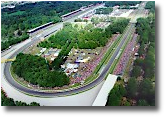 Perfect execution with maximum exit speed is thus vital for a quick lap. The corner lasts an astounding 7.6s at race speeds of close to 200kph (150mph), with drivers getting on to the power as early as possible, drifting the cars to the very outside of the tarmac at the exit. Perhaps less well-known today in light of Sebastian Vettel’s brilliant outside pass of Fernando Alonso at the Curva Grande in 2011 — misnamed now, as in modern F1 it is barely a flick, taken flat out — the Parabolica remains a test of precision and bravery. It is also the site of Derek Warwick’s miraculous escape after a devastating 1990 shunt in his Lotus and, sadly, the place where 20 years earlier Jochen Rindt was killed during practice in his own Lotus 72 before winning the World Championship posthumously.
Perfect execution with maximum exit speed is thus vital for a quick lap. The corner lasts an astounding 7.6s at race speeds of close to 200kph (150mph), with drivers getting on to the power as early as possible, drifting the cars to the very outside of the tarmac at the exit. Perhaps less well-known today in light of Sebastian Vettel’s brilliant outside pass of Fernando Alonso at the Curva Grande in 2011 — misnamed now, as in modern F1 it is barely a flick, taken flat out — the Parabolica remains a test of precision and bravery. It is also the site of Derek Warwick’s miraculous escape after a devastating 1990 shunt in his Lotus and, sadly, the place where 20 years earlier Jochen Rindt was killed during practice in his own Lotus 72 before winning the World Championship posthumously.
 Perfect execution with maximum exit speed is thus vital for a quick lap. The corner lasts an astounding 7.6s at race speeds of close to 200kph (150mph), with drivers getting on to the power as early as possible, drifting the cars to the very outside of the tarmac at the exit. Perhaps less well-known today in light of Sebastian Vettel’s brilliant outside pass of Fernando Alonso at the Curva Grande in 2011 — misnamed now, as in modern F1 it is barely a flick, taken flat out — the Parabolica remains a test of precision and bravery. It is also the site of Derek Warwick’s miraculous escape after a devastating 1990 shunt in his Lotus and, sadly, the place where 20 years earlier Jochen Rindt was killed during practice in his own Lotus 72 before winning the World Championship posthumously.
Perfect execution with maximum exit speed is thus vital for a quick lap. The corner lasts an astounding 7.6s at race speeds of close to 200kph (150mph), with drivers getting on to the power as early as possible, drifting the cars to the very outside of the tarmac at the exit. Perhaps less well-known today in light of Sebastian Vettel’s brilliant outside pass of Fernando Alonso at the Curva Grande in 2011 — misnamed now, as in modern F1 it is barely a flick, taken flat out — the Parabolica remains a test of precision and bravery. It is also the site of Derek Warwick’s miraculous escape after a devastating 1990 shunt in his Lotus and, sadly, the place where 20 years earlier Jochen Rindt was killed during practice in his own Lotus 72 before winning the World Championship posthumously.130R
Suzuka Circuit
Japan’s Suzuka Circuit has witnessed some of the classic championship-deciding races in Formula One history. With the track’s signature Ferris wheel (“big wheel” for the British) in the background, Suzuka’s most important and intimidating corner is the oddly but appropriately-named 130R, a 130 meter (427ft) radius turn  starting past the crossover. Following two tremendous accidents (in 2002, Toyota driver Allan McNish suffered a high-speed crash in qualifying which sent him through the metal catch fence), the 130R was redesigned slightly to add a straighter entry, making it essentially a double-apex, left-hand corner. It remains among the fastest turns in F1, taken at speeds approaching 305kph (190mph) with a load of 3.5 lateral Gs. It is cited by many drivers as one of the most difficult and challenging corners on the calendar and was the site of Fernando Alonso’s magnificent outside pass of Michael Schumacher in 2005. As Robert Kubica remarked, “The 130R is just awesome. You’re just flat out in seventh and it bends so you are completely on the limit. It really rewards you if you get it right.”
starting past the crossover. Following two tremendous accidents (in 2002, Toyota driver Allan McNish suffered a high-speed crash in qualifying which sent him through the metal catch fence), the 130R was redesigned slightly to add a straighter entry, making it essentially a double-apex, left-hand corner. It remains among the fastest turns in F1, taken at speeds approaching 305kph (190mph) with a load of 3.5 lateral Gs. It is cited by many drivers as one of the most difficult and challenging corners on the calendar and was the site of Fernando Alonso’s magnificent outside pass of Michael Schumacher in 2005. As Robert Kubica remarked, “The 130R is just awesome. You’re just flat out in seventh and it bends so you are completely on the limit. It really rewards you if you get it right.”
 starting past the crossover. Following two tremendous accidents (in 2002, Toyota driver Allan McNish suffered a high-speed crash in qualifying which sent him through the metal catch fence), the 130R was redesigned slightly to add a straighter entry, making it essentially a double-apex, left-hand corner. It remains among the fastest turns in F1, taken at speeds approaching 305kph (190mph) with a load of 3.5 lateral Gs. It is cited by many drivers as one of the most difficult and challenging corners on the calendar and was the site of Fernando Alonso’s magnificent outside pass of Michael Schumacher in 2005. As Robert Kubica remarked, “The 130R is just awesome. You’re just flat out in seventh and it bends so you are completely on the limit. It really rewards you if you get it right.”
starting past the crossover. Following two tremendous accidents (in 2002, Toyota driver Allan McNish suffered a high-speed crash in qualifying which sent him through the metal catch fence), the 130R was redesigned slightly to add a straighter entry, making it essentially a double-apex, left-hand corner. It remains among the fastest turns in F1, taken at speeds approaching 305kph (190mph) with a load of 3.5 lateral Gs. It is cited by many drivers as one of the most difficult and challenging corners on the calendar and was the site of Fernando Alonso’s magnificent outside pass of Michael Schumacher in 2005. As Robert Kubica remarked, “The 130R is just awesome. You’re just flat out in seventh and it bends so you are completely on the limit. It really rewards you if you get it right.”Circuit Spa-Francorchamps
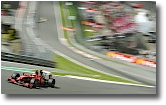 Arguably the most famous corner of them all. During World War II, the area surrounding Spa, Belgium witnessed some of the most ferocious fighting in history while the Battle of the Bulge raged in the Ardennes forrest. The result is the appropriately named “Eau Rouge” (red water) corner at Circuit de Spa-Francorchamps, a plunging right-left-right kink that has tested the bravery of F1 drivers for decades. Many pundits say that Eau Rouge no longer warrants being named among Formula One’s best corners because steady improvements in aerodynamics and grip now allow drivers to take it flat, while runoff areas have decreased the danger over the decades. But we think that overlooks the amazing compression and G-forces still experienced at Eau Rouge and the fact that watching on television just cannot do justice to the hugely steep gradients marking both the downhill and uphill sections. As Martin Brundle has remarked, “You had better hold onto your heart in Eau Rouge, otherwise it will come out of your throat.” Some suggest that Pouhon is tougher now. Tell that to Fernando Alonso, who was on the receiving end of a fabulous overtaking maneuver by Mark Webber in the 2011 Belgian Grand Prix, or to Alex Zanardi, Jacques Villeneuve and Ricardo Zonta, all of whom survived massive accidents at Eau Rouge in the 1990s.
Arguably the most famous corner of them all. During World War II, the area surrounding Spa, Belgium witnessed some of the most ferocious fighting in history while the Battle of the Bulge raged in the Ardennes forrest. The result is the appropriately named “Eau Rouge” (red water) corner at Circuit de Spa-Francorchamps, a plunging right-left-right kink that has tested the bravery of F1 drivers for decades. Many pundits say that Eau Rouge no longer warrants being named among Formula One’s best corners because steady improvements in aerodynamics and grip now allow drivers to take it flat, while runoff areas have decreased the danger over the decades. But we think that overlooks the amazing compression and G-forces still experienced at Eau Rouge and the fact that watching on television just cannot do justice to the hugely steep gradients marking both the downhill and uphill sections. As Martin Brundle has remarked, “You had better hold onto your heart in Eau Rouge, otherwise it will come out of your throat.” Some suggest that Pouhon is tougher now. Tell that to Fernando Alonso, who was on the receiving end of a fabulous overtaking maneuver by Mark Webber in the 2011 Belgian Grand Prix, or to Alex Zanardi, Jacques Villeneuve and Ricardo Zonta, all of whom survived massive accidents at Eau Rouge in the 1990s.Turn Eight
Istanbul Park
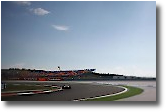 It may not have had a name and was designed by modern F1 track maven Hermann Tilke’s Tilke GmbH — chief architect of the boring “point-and-squirt” circuits blighting the modern F1 calendar — but Turn 8 at Turkey’s Istanbul Park seriously challenged the F1 establishment thanks to its fearsome reputation. Turn 8 boasts top speeds of 270kph (170mph), four distinct apexes and many bumps, and for years was one of the longest on the calendar, meaning drivers pull up to 5Gs for more than seven seconds through the awesome left-hander. If you get it right, you can make up a lot of ground, but thanks to the bumpy surface it’s very easy to get it wrong. “It’s a real rollercoaster and it’s awesome,” commented Force India driver Adrian Sutil. This epic turn represented a true test of driver skill and precision at a circuit that, as of the 2012 season, was sadly jettisoned from F1.
It may not have had a name and was designed by modern F1 track maven Hermann Tilke’s Tilke GmbH — chief architect of the boring “point-and-squirt” circuits blighting the modern F1 calendar — but Turn 8 at Turkey’s Istanbul Park seriously challenged the F1 establishment thanks to its fearsome reputation. Turn 8 boasts top speeds of 270kph (170mph), four distinct apexes and many bumps, and for years was one of the longest on the calendar, meaning drivers pull up to 5Gs for more than seven seconds through the awesome left-hander. If you get it right, you can make up a lot of ground, but thanks to the bumpy surface it’s very easy to get it wrong. “It’s a real rollercoaster and it’s awesome,” commented Force India driver Adrian Sutil. This epic turn represented a true test of driver skill and precision at a circuit that, as of the 2012 season, was sadly jettisoned from F1.Mirabeau
Circuit de Monaco
Monaco is often described as both an anachronism and the jewel in F1’s crown. Its iconic Fairmont Hotel (Loews) Hairpin turn and the La Piscine chicanes — added around the new swimming pool in 1973 — are typically listed among the top corners in Formula One. At F1A&G, however, 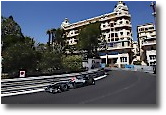 we think the gem of Monaco is Mirabeau (so named for the luxury hotel standing behind), the transition between the sweepers in Casino Square and the twisty downhill section leading to Portier and the famous tunnel — a stretch Keke Rosberg once likened to being on a toboggan without any snow to cushion the bumps. And Keke was not afraid of anything. With a huge flat-spot just before on the straight and requiring massive braking as the tarmac falls away, Mirabeau is one of the few overtaking opportunities on the circuit. Its challenge is illustrated by Lewis Hamilton’s ill-fated qualifying session in 2009, where he put his McLaren squarely into the Armco and out of contention for pole, as well as Rubens Barrichello’s pass on Michael Schumacher in the 2011 season. If you’ve ever tried to take on Mirabeau in a realistic F1 racing Sim, you know what we mean.
we think the gem of Monaco is Mirabeau (so named for the luxury hotel standing behind), the transition between the sweepers in Casino Square and the twisty downhill section leading to Portier and the famous tunnel — a stretch Keke Rosberg once likened to being on a toboggan without any snow to cushion the bumps. And Keke was not afraid of anything. With a huge flat-spot just before on the straight and requiring massive braking as the tarmac falls away, Mirabeau is one of the few overtaking opportunities on the circuit. Its challenge is illustrated by Lewis Hamilton’s ill-fated qualifying session in 2009, where he put his McLaren squarely into the Armco and out of contention for pole, as well as Rubens Barrichello’s pass on Michael Schumacher in the 2011 season. If you’ve ever tried to take on Mirabeau in a realistic F1 racing Sim, you know what we mean.
 we think the gem of Monaco is Mirabeau (so named for the luxury hotel standing behind), the transition between the sweepers in Casino Square and the twisty downhill section leading to Portier and the famous tunnel — a stretch Keke Rosberg once likened to being on a toboggan without any snow to cushion the bumps. And Keke was not afraid of anything. With a huge flat-spot just before on the straight and requiring massive braking as the tarmac falls away, Mirabeau is one of the few overtaking opportunities on the circuit. Its challenge is illustrated by Lewis Hamilton’s ill-fated qualifying session in 2009, where he put his McLaren squarely into the Armco and out of contention for pole, as well as Rubens Barrichello’s pass on Michael Schumacher in the 2011 season. If you’ve ever tried to take on Mirabeau in a realistic F1 racing Sim, you know what we mean.
we think the gem of Monaco is Mirabeau (so named for the luxury hotel standing behind), the transition between the sweepers in Casino Square and the twisty downhill section leading to Portier and the famous tunnel — a stretch Keke Rosberg once likened to being on a toboggan without any snow to cushion the bumps. And Keke was not afraid of anything. With a huge flat-spot just before on the straight and requiring massive braking as the tarmac falls away, Mirabeau is one of the few overtaking opportunities on the circuit. Its challenge is illustrated by Lewis Hamilton’s ill-fated qualifying session in 2009, where he put his McLaren squarely into the Armco and out of contention for pole, as well as Rubens Barrichello’s pass on Michael Schumacher in the 2011 season. If you’ve ever tried to take on Mirabeau in a realistic F1 racing Sim, you know what we mean.S do Senna
Interlagos, São Paulo
Interlagos is another circuit where pundits like to call the fifth-gear left-hander of Mergulho a top F1 corner. We think that’s a nondescript part of the twisty and challenging but otherwise altogether forgettable infield section. Far better are Turns 1-3 — the S do Senna or “Senna S” — which come at the end of the long, long uphill 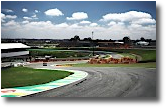 main “straight” and present a serious driving challenge. With the road falling off to the right, a downhill left-hand turn that yields massive understeer is followed by a fast left-right combination. Hard to master but crucial to a quick entry onto the track’s other straight, the Senna S is a monster, requiring precision, car control and as David Hobbes is known to say, “rather large attachments.” It is also the place at Interlagos where, among others, Schumacher and Bruno Senna collided during the 2011 Brazilian GP, Juan Pablo Montoya passed Schumacher in 2001 and Alain Prost spun out of P1 in the rain at the 1993 race.
main “straight” and present a serious driving challenge. With the road falling off to the right, a downhill left-hand turn that yields massive understeer is followed by a fast left-right combination. Hard to master but crucial to a quick entry onto the track’s other straight, the Senna S is a monster, requiring precision, car control and as David Hobbes is known to say, “rather large attachments.” It is also the place at Interlagos where, among others, Schumacher and Bruno Senna collided during the 2011 Brazilian GP, Juan Pablo Montoya passed Schumacher in 2001 and Alain Prost spun out of P1 in the rain at the 1993 race.
 main “straight” and present a serious driving challenge. With the road falling off to the right, a downhill left-hand turn that yields massive understeer is followed by a fast left-right combination. Hard to master but crucial to a quick entry onto the track’s other straight, the Senna S is a monster, requiring precision, car control and as David Hobbes is known to say, “rather large attachments.” It is also the place at Interlagos where, among others, Schumacher and Bruno Senna collided during the 2011 Brazilian GP, Juan Pablo Montoya passed Schumacher in 2001 and Alain Prost spun out of P1 in the rain at the 1993 race.
main “straight” and present a serious driving challenge. With the road falling off to the right, a downhill left-hand turn that yields massive understeer is followed by a fast left-right combination. Hard to master but crucial to a quick entry onto the track’s other straight, the Senna S is a monster, requiring precision, car control and as David Hobbes is known to say, “rather large attachments.” It is also the place at Interlagos where, among others, Schumacher and Bruno Senna collided during the 2011 Brazilian GP, Juan Pablo Montoya passed Schumacher in 2001 and Alain Prost spun out of P1 in the rain at the 1993 race.

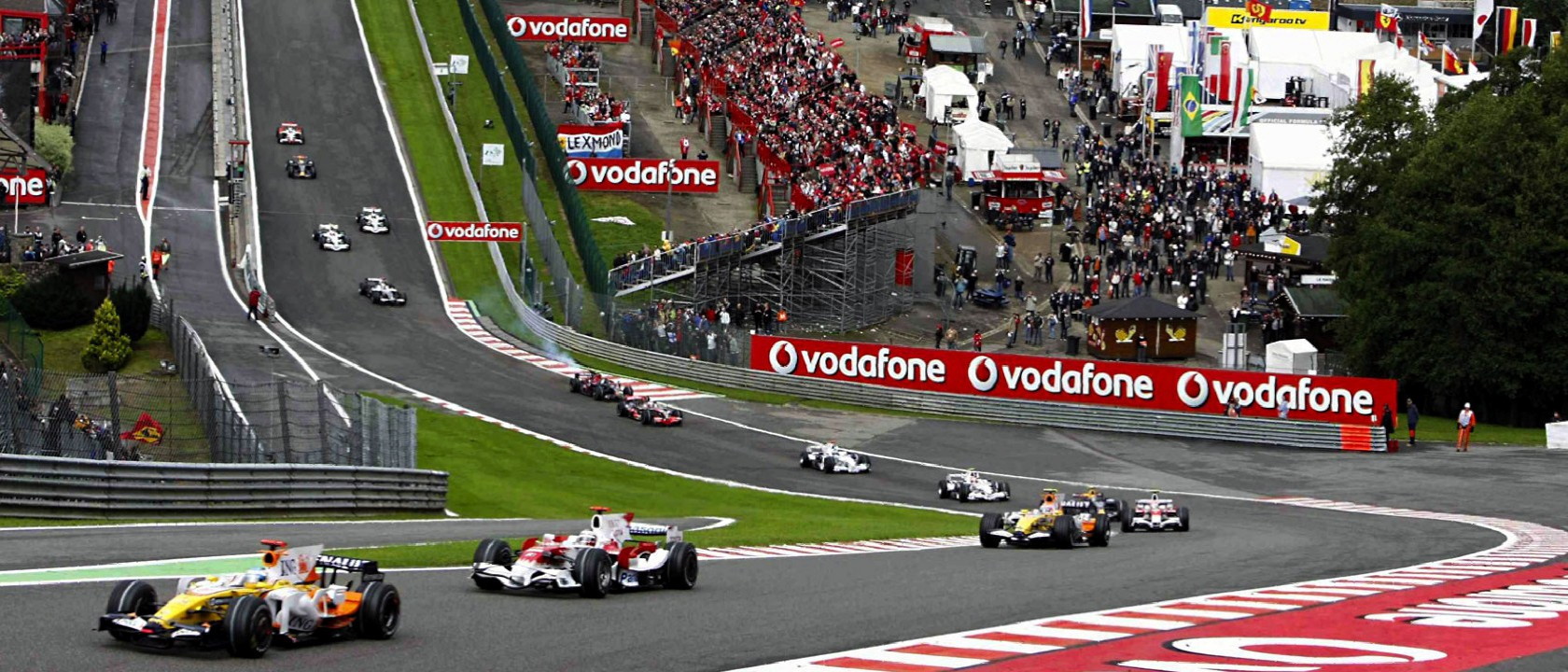
Not a single corner from Silverstone among the top 6 !!!!!!!!!
Best Corners?
Forget all of those, Paddock Hill Bend at Brands Hatch tops the lot, (Remember Brands Hatch anyone?). how quickly times change to accommodate vested interests!
Brands Hatch is a wonderful circuit. It would be great if the British or European GPs returned there after 15 years on.
Partha Sen, which Silverstone corner would you propose for the “top six”?
New to an old post but Maggots – Becketts- Chapel three of best sequences in F1.
Yes, many people also think so, but not me! Sorry, they’re technically challenging and fast but lack drama in nearly all British GPs. I respect other views of course.
Wall of Quebec – Circuit Gilles Villeneuve (Montreal). Took down a lot of F1 world champions because of the high level difficulty of execution.
In general this is a good list. I’m not really sold on Mirabeau -other than the tradition I’m not sold on anything Monaco. I would list Campsa at Catalunya instead -a fast right sweeper like many except that it’s steeply uphill so you can’t see the apex until you’re literally on top of it. Almost as good as Raidillon (Eau Rouge) although we all know nothing in F1 is as good as Radillon 😉
Not on the F1 calendar but the Corkscrew at Laguna Seca in Central California. F1 decided against racing there because it is in a remote area and feared a low spectator turnout.
Becketts at Silverstone has long been a driver favourite, and for fans the ‘Wall of Champions’ as it is known in England at Montreal always catches the fans imagination.
I hear that both Sao Paolo and Montreal are threatened with being dropped from the calender. A travesty as fans across the world are mourning the loss or neutering of great circuits, in favour of ever more Herman Tilke designs that even the drivers struggle to stay awake at!